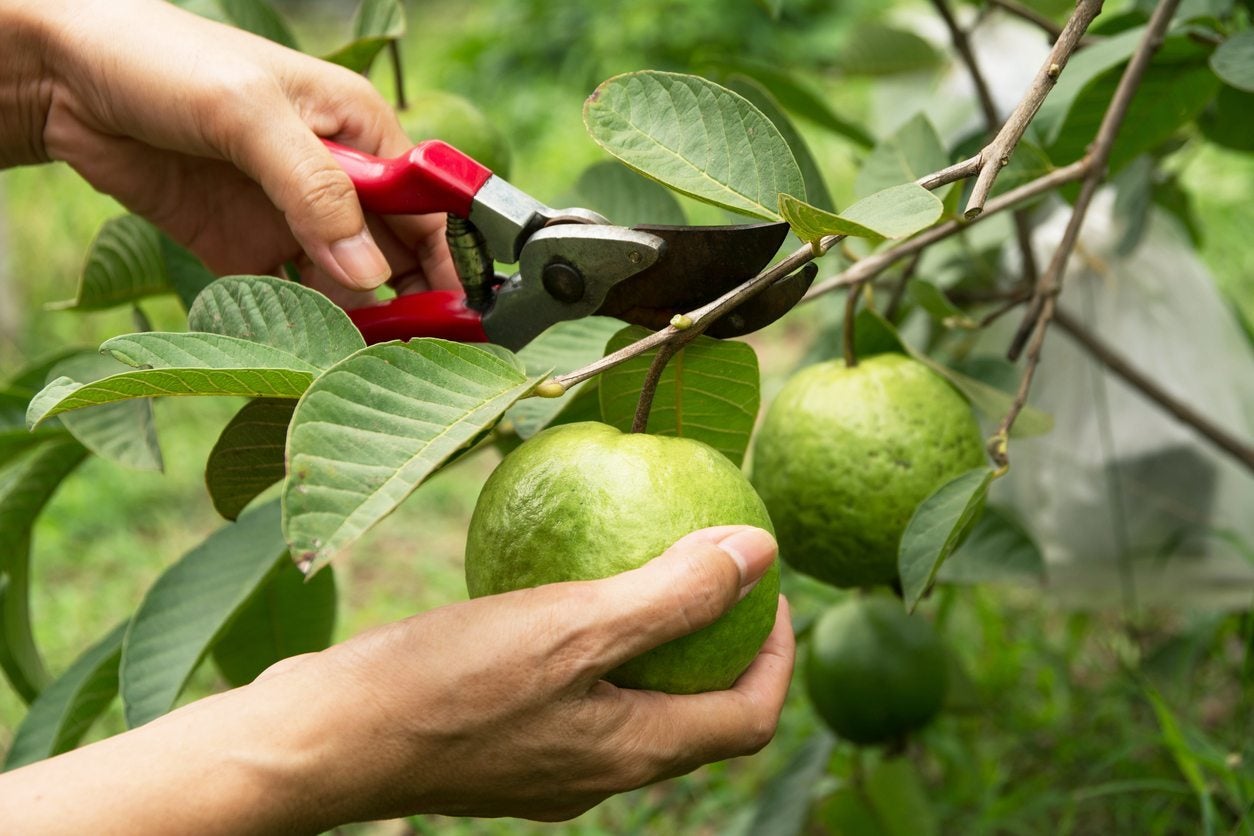Guava Tree Pruning – How Do I Prune My Guava Tree

Guavas are a group of tropical trees in the Psidium genus that produce delicious fruit. Guava paste, juice, and preserves are important in the cuisines of Caribbean and southeast Asian countries, and the fruits are eaten fresh or cooked. Today, the common guava (Psidium guajaba) is grown in places as far apart as Florida, Hawaii, India, Egypt, and Thailand. Properly pruning a guava tree is an important part of its care. If you’re wondering how or when to prune guava trees, this article is for you.
How Do I Prune My Guava Tree?
Guava is a shrubby tree that grows densely and will attempt to spread horizontally along the ground. You can, therefore, choose to prune guavas into the shape of a tree or a bush, or even grow them as a hedge. If you prune your guava in bush form, branches will emerge from near the ground. If you train your guava into a tree shape by selecting a single trunk, the fruiting limbs will emerge from 2 feet (61 cm.) off the ground and up. In either case, it’s best not to allow your guava to grow taller than 10 feet (3 m.), or it could blow over in strong winds. Now, let’s learn how to prune a guava properly to encourage its healthy growth and maximize fruit production.
Guava Tree Pruning Techniques
Three types of cuts are used on guava trees: thinning cuts, heading back, and pinching. Thinning helps counteract the tree’s dense growth to let light and air into the inner branches, which helps them stay healthy and productive. It also makes the fruit easier to reach. To thin, simply remove some of the branches by cutting them at their base. Pinching means removing the growing tip of shoots. Heading back means pruning individual branches to reduce their length. These techniques allow you to control the horizontal spread of the tree. Guava flowers on new growth, so these cuts also induce the tree to produce more flowers and fruit. It is important to prune established trees regularly to prevent them from spreading away from the original planting location. Guavas have become invasive trees in some regions of Florida, Hawaii, and elsewhere. Remove any suckers that appear at the base of the tree or above the roots and cut back branches that spread too far.
When to Prune Guava Trees
Prune guavas three to four months after planting to train them to the desired shape. If you are pruning yours to a tree shape, select a single trunk and three or four lateral (side) branches. Remove all other shoots. Pinch back the tips of the selected side branches when they are 2 to 3 feet (61-91 cm.) long. This will encourage them to produce additional branches. After this, prune your guava tree annually to maintain its symmetry and remove excessive growth. Guava tree pruning should be performed in late winter or early spring. Diseased branches and suckers can be removed at any time of year. Commercial growers also conduct severe “crop cycling” pruning to delay fruiting on individual trees in the following season. This practice allows a planting to produce fruit over a longer period.
Sign up for the Gardening Know How newsletter today and receive a free copy of our e-book "How to Grow Delicious Tomatoes".
Ilana Goldowitz Jimenez is a scientific and agricultural writer with a B.S. in Plant Sciences from Cornell University and a PhD in Chemical Biology and Infectious Disease from Harvard University.